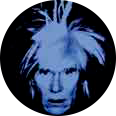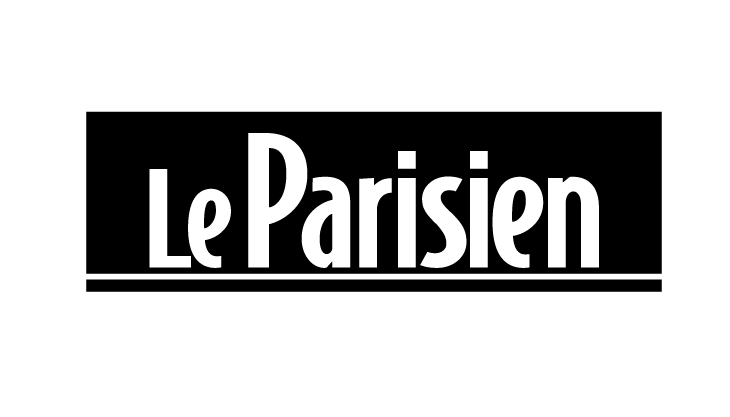Artwork of Andy Warhol
An American artist rightly considered the ‘Pope of Pop Art’, Andy Warhol left his mark on the art world with works that challenged the public, and Warhol's collection is still on display at exhibitions all over the world.
Year after year, Warhol democratised art through screen printing and broke the mould by creating the ‘Factory’, enabling more intensive production and developing painting, music and film, with a whole range of artists creating works, each more innovative than the last.
Discover the work of Andy Warhol, the most prominent American artist of his generation, with his famous ‘Campbell's Soup Cans’ (1962, Museum Abteiberg, Mönchengladbach), the painter's first work to have an international impact, ‘Two Dollar Bills’ (1962, Ludwig Museum, Cologne), from his series of paintings on the theme of the dollar sign, now selling for several million dollars at auction houses, or the ‘Marilyn Diptych’ (1962, Tate Modern, London), a series featuring a portrait of Marilyn Monroe, and part of a whole production of portraits of celebrities from the 60s.
Treat yourself to a page from the history of contemporary art, with a reproduction of Andy Warhol available in the catalogue, the contemporary artist who has left a lasting mark on the world of pop art.
Biography of Andy Warhol
Andy Warhol's youth and education
Andy Warhol, prolific painter and key figure in modern art, was born in 1928 in Pittsburgh, into a family of modest Ruthenian immigrants. From the beginning of his life, with his father Andrej, his mother Julia and his brothers John and Paul, he was marked by two elements that would shape his identity and his work: the Great Depression that plunged his family into great precariousness, and the Byzantine iconography that coloured the Catholicism of his youth. This combination gave Warhol a unique perspective on art and society, while ensuring that art played a central role in his daily life. At a very young age, Warhol contracted a neurological disease, Sydenham's chorea, which regularly forced him to stay in bed for long periods of time. This period marked an important stage in Warhol's development, naturally leading him towards drawing, studying cinema, collecting photos of stars of the time, and listening to radio programmes, all elements that prefigured his future interests in his art.
However, he did not neglect his studies, and after graduating from secondary school in 1945, Warhol obtained his Bachelor of Fine Arts at the Carnegie Institute of Technology in Pittsburgh. This formal education, combined with the creativity and resilience he developed during his childhood, shaped the Warhol we know: a pioneer, a provocateur, and above all, an unrivalled symbol of contemporary art.
Early artistic career for Andy Warhol
Andy Warhol's artistic career really took off in 1949, when he left Pittsburgh for New York, where he quickly became a prominent commercial illustrator. His scribbled drawings and elegantly offbeat designs embellished the pages of Glamour, Vogue and Harper's Bazaar. These works, inspired by the consumer society and the vibrant nightlife of New York, already reflected his attraction to a modern aesthetic and his fascination with celebrity.
It was in his desire to become a renowned artist that the American painter and advertiser regularly frequented iconic New York venues such as Serendipity 3, a bar and restaurant where the city's great artists, such as Marilyn Monroe, would meet, and where his first drawings appeared on the walls. However, the first real solo exhibition of his advertisements was held in 1952 at the Hugo Gallery in New York, and the advertising executive made a name for himself by exhibiting at the Loft Gallery in 1954 and the Bodley Gallery in 1956.
From gallery to gallery, his talent for creating advertisements was particularly recognised in 1957, when he was awarded several prizes for his innovative and striking designs. This experience in advertising would greatly influence his art, with Warhol later recycling his own advertisements, using images of consumerism and clichés of popular culture to create provocative and satirical works. His unique creations transformed advertising into an art form in its own right, marking the beginning of Pop Art.
Transition to Pop Art for Andy Warhol
Andy Warhol, influenced by European avant-garde artists and his experience as an advertiser, naturally gravitated towards the emerging Pop Art movement from the 1960s onwards. The first works from this period, such as ‘Advertisement’, ‘Before and After’, ‘Little King’, ‘Saturday's Popeye’ and ‘Superman’ were exhibited for the first time in 1961. From then on, Andy Warhol's fame quickly spread beyond the state of New York, and in 1962 he exhibited alongside Roy Lichtenstein at the Léo Castelli Gallery and launched his famous ‘Campbell's Soup Can’ series (Museum Abteiberg, Mönchengladbach). These works immediately captivated the public's attention, recalling stereotypical images of mass consumption. On 31 October 1962, Warhol took part in his first international Pop Art exhibition, ‘The New Realists’, at the Sidney Janis Gallery in New York. Alongside Roy Lichtenstein, Niki de Saint Phalle and posthumous works by Yves Klein. With this exhibition, he responded to the exhibition ‘Motion in Vision - Vision in Motion’, organised by European artists at the Stedelijk Museum in Amsterdam two years earlier.
In the same year, he also presented the first series of his work on the theme of ‘Dollars’ (Ludwig Museum, Cologne). Warhol then began to integrate screen printing into his works, using this process in particular for his famous portraits of American stars such as Marilyn Monroe and Elvis Presley, and enabling a wide distribution of his works to the general public. His fame reached new heights when he invited actors, celebrities and figures from the art world to pose in a photo booth for his series of portraits, making him one of the leading figures of pop art.
Foundation of Andy Warhol's Factory
Always at the forefront of art, Andy Warhol founded the ‘Factory’ in 1964, an artists' factory in the heart of New York. A true artistic incubator, the space was quickly dedicated to creation and experimentation, but also to partying, with Warhol organising numerous soirées with all the biggest celebrities of the moment. The Factory was a hive of activity, and became the birthplace of a plethora of Warhol's artistic creations, including paintings, films and musical productions, established in this underground atmosphere that fused art and nightlife. However, Warhol's impact at the Factory was not limited to his own production; the venue also became a platform for other artists. Stars of the music scene such as John Cale and Lou Reed of the Velvet Underground, or Paul Morrissey, as well as many protagonists of the cultural movement and underground arts of that era found refuge and inspiration there. The Factory thus became a gateway to a place where art was free from constraints.
The aura of the Factory spread across New York and then across the Atlantic, attracting artists from all walks of life, from Paris to Berlin via Amsterdam. The founding of this place marks a crucial stage in the democratisation of Pop Art, establishing film, Warhol's favourite medium at the time, as a central element of contemporary art.
The 70s and 80s: Diversification, continuity and the end of a career at the top for Andy Warhol
As a pioneering figure in Pop Art, Andy Warhol went through many challenges and changes during the 70s and 80s. In 1968, an assassination attempt left him seriously injured, slowing down his prolific artistic production. Despite this, he showed incredible resilience. A year after this tragedy, in 1969, he diversified his field of activity and returned to work with the creation of the magazine ‘Interview’, an essential page for pop culture enthusiasts, reaffirming his undeniable influence. After a period of creative hibernation, he returned in force to his initial love, painting. The 70s and 80s became the theatre of meticulous and diverse work. Andy produced a series of large portraits, including that of Mao Zedong in 1972. He also experimented with conceptual works such as ‘Skulls’ and ‘Still Life’ in 1976, thus returning to screen printing. In 1979, Warhol continued with a retrospective series of his most famous works, among which the unforgettable ‘Campbell's Soup Cans’, ‘U.S. Dollar Sign’ and ‘Flowers’ stand out. The start of the 80s was marked by the creation of a series of paintings centred on Vesuvius. In parallel to his paintings, he returned to films, producing music videos and launching his own television channel, ‘Andy Warhol TV’. It was also during this period that he met promising young artists such as Jean-Michel Basquiat and Keith Haring, quickly becoming their mentor and contributing, once again, to shaping the future of contemporary arts. In the final years of his career, Warhol revisited masterpieces of art history such as Botticelli's ‘The Birth of Venus’ and da Vinci's ‘The Last Supper’, unwittingly signing the final page of his artistic life, which was characterised by a total commitment to art.
Death and legacy of Andy Warhol in the art world
After dedicating his life to art, Andy Warhol died suddenly in 1987 in a New York hospital, following post-operative complications and years of excess. This sudden death caused considerable shock in the art world. Warhol, the American artist, the pope of Pop Art who transformed everyday objects into works of art, left his mark on the contemporary art scene with icons such as the ‘Campbell's soup cans’ or his numerous portraits of celebrities, works that today are worth millions of dollars. In Paris as in New York, the artist's exhibitions always draw large crowds to galleries and museums, and his legacy continues to nourish contemporary art, from painting to music, sculpture and film. As an openly gay artist, Warhol also paved the way for a freer representation of sexuality in art. His many portraits unpretentiously depict this subculture, offering hitherto unseen images. Today, from New York to Tokyo, via Paris and Berlin, Warhol's work is on display in many major centres of artistic life, such as the Louis Vuitton Foundation in Paris, the Ludwig Museum in Cologne, and the Andy Warhol Museum of Modern Art in Medzilaborce, Slovakia, the country of origin of his parents and his brothers John and Paul. A foundation, ‘The Andy Warhol Foundation for the Visual Arts’, has even been set up in New York, with the aim of promoting modern art and the visual arts.
Warhol's collection of works, although each painting, portrait or other work in a medium other than painting or screen printing is now sold for millions of dollars, remains in constant evolution in the hearts of the public and artists, and has never been so popular, continuing to be revisited and questioned in both underground and popular circles, thus leaving an indelible mark on the art scene every year.
Learn more about the life and the works of Andy Warhol.




























